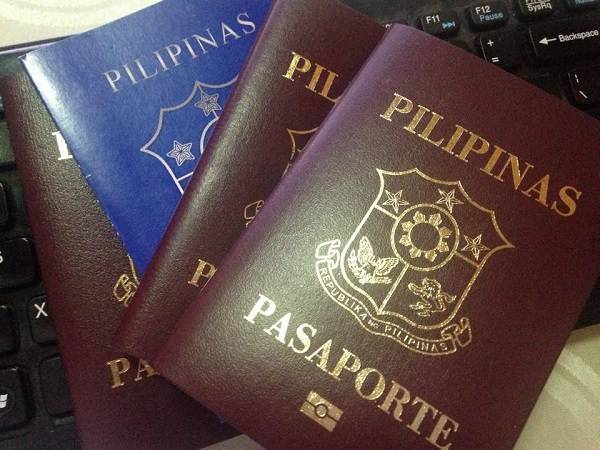How many Filipinos overstayed their US visas in 2016?
NEW YORK — Amid an uptick in deportation and the unwavering stance of President Donald Trump to remove millions of immigrants living in the United States illegally, thousands of Filipinos took the risk and overstayed their US visas during the last fiscal year.
A new entry/exit overstay report by the U.S. Department of Homeland Security (DHS), which was released on May 22, says that more than 12,000 Filipinos continued to remain in the United States after their visas expired in 2016.
Of this number of Filipinos, 5,000 came to America on business and tourist visas, known as B1 and B2 visas, respectively, while about 934 were students and exchange visitors, according to the report.
But the biggest bulk of Filipino overstays (6,523) last year include temporary workers and trainees, traders and investors, fiancées of U.S. citizens and spouses and children of US citizens and permanent residents whose visas are pending.
‘TNTs’
An overstay is “a non-immigrant who was lawfully admitted to the United States for an authorized period but stayed in the United States beyond his or her lawful admission period.” In Filipino parlance, an overstay is known as “TNT,” which stands for Tago Nang Tago or always in hiding.
DHS described two types of visa overstay: individuals for whom no departure has been recorded, and individuals whose departure from the United States was recorded after their lawful period of admission expired.
The fiscal year started from Oct. 1, 2015 to Sept. 30, 2016. Valid periods of admission to the United States vary, and thus it is necessary to establish “cutoff dates” for the purposes of monitoring and determining the entry/exit data.
“This [report] only shows that we do have a problem with visa overstays in the United States,” said a senior DHS officer in a press release.
Overall, DHS officials announced that during the 2016 fiscal year, there were more than 50 million non-immigrants who were admitted into the United States via air and seaport entries. This figure does not include individuals who either walked or drove across the U.S. Canada and U.S. Mexico borders.
Most follow terms of admission
Interestingly, only 1.47 percent of those individuals— about 740,000 — overstayed their visas. It means that 98.53 percent of non-immigrant visitors actually departed the United States on time and abided by the terms of their admission.
But the number of Filipino overstays is comparatively much lower than many other countries in Europe, South America and Asia.
The top 10 countries with highest number of overstays are as follows: 1. Canada (129,311); 2. Mexico (52,958); 3. Brazil (43,722); 4. China (36,568); 5. India (30,399); 6. Venezuela (25,481); 7. United Kingdom (23,422); 8. Germany (21,756); 9. Colombia (20,351; and 10. Italy (17,297).
However, the DHS has acknowledged: “Determining lawful status is more complicated than solely matching entry and exit data.”
Here’s one scenario of its complexity: A lawfully admitted person may receive a six-month admission from the U.S. Customs and Border Protection upon entry into the United States, but then he or she may apply and receive subsequently from the U.S. Citizenship and Immigration Services a six-month extension.
Flaws in agency estimates
That demonstrates that there could be some flaws in each agency’s estimates, as a result of lack of hard exit data as well as of the challenges coordinating more than 27 information systems and database between agencies.
According to the Pew Research Center, the general visa overstays account 45 percent of the 12 million undocumented immigrants in the United States.
“I’m aware of the risks,” said Rory, a 52-year-old Filipina who came to Chicago, Illinois to attend a trade show last year and then decided to stay past the duration of her U.S. visa. “I know I have a choice, but this is my decision to become a TNT.”
Individuals voluntary depart the United States after overstaying their visas could be barred from returning to the United States for three to 10 years, depending on the period overstayed.
Counterterrorism
The Counterterrorism and Criminal Exploitation Unite (CTCEU), an arm of the U.S. Immigration Customs and Enforcement (ICE), oversees the national program dedicated to the enforcement of non-immigrant visa violations, the report added.
Those overstays who pose a potential national security threat to the United States are prioritized and referred to ICE field offices for further investigation or removal operations.
According to the report, “the goal is to identify, locate, prosecute where applicable, and remove those overstays posing real or potential national security threats to the United States.”
Rory says that, part of the reasons that she had overstayed, is that she was only given a two-week visa at the U.S. Embassy, in Manila.
“It was very difficult for me to get the visa, and I am afraid I won’t be able to get another one again,” she said. “I don’t know how will I legalize my status here in America, but I do need to be very careful.”


